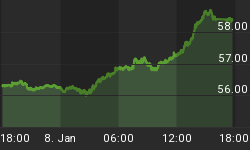The U.S. economy added 467,000 in January, while the unemployment rate went down to 4%, significantly above expectations as the Dow Jones estimate was for payroll growth of 150,000.
With a total of 6.6 million new jobs, 2021 is the biggest single-year gain in U.S. history
According to the Bureau of Labor Statistics, much as in previous months, the biggest employment gains last month came in leisure and hospitality, which saw 151,000 hires, the vast majority of which came from bars and restaurants.
In January, professional and business services added 86,000 jobs while retail trade employment rose by 61,000.
Employment in local government education rose by 29,000 in January but is down by 359,000 compared to pre-pandemic levels. Additionally, adding 18,000 jobs last month, employment in health care is still 378,000 lower than early 2020.
“Employment showed little change over the month in mining, construction, manufacturing, information, financial activities, and other services,” the report said.
U.S. President Joe Biden chimed in on the jobs report, saying that it demonstrates that the economy is clearly on the rebound and that the recovery is much better than predicted.
“America’s job machine is going stronger than ever… If you can't remember another year when so many people went to work in this country, there's a reason. It never happened. History has been made here,” President Biden said at the White House.
Yet, although the recovery has quickened its pace, it’s still uneven. The January job gains, as for previous months, were led by men, particularly white and Hispanic workers. New job rates for women and black and Asian workers remained unchanged.
Just 39,000 women joined the labor force in January, compared to more than one million men, a study by the National Women’s Law Center showed. During the first few months of the pandemic, women lost 12.2 million jobs.
The report found that there are nearly 1.1 million fewer women in the labor force now compared to early 2020.
Despite overall positive numbers in January, it is still hard for some businesses to find enough labor. As a result, businesses are stepping up the competition, paying more, and dangling a variety of bonuses before potential workers.
According to the Bureau of Labor Statistics (BLS), the labor market is down 9.9 million jobs since February 2020. In the retail sector alone, companies are trying to fill more than one million empty positions
According to the Labor Department's latest report, employers posted 10.9 million open jobs in December. That represents 1.7 job openings for every unemployed worker, the most in the two decades.
Wages also jumped in January as average hourly earnings for workers across the economy climbed 0.7% over the month ( 5.7% over the last year) exceeding the median forecast for a 0.5% jump. However, the rate of wage gains, still lags inflation, which was running around 7%, the largest 12-month increase in nearly 40 years.
The Bureau of Labor Statistics estimates that in the last three months, the cost of goods and services from the consumer price index increased by 5.4%. From December 2020 to December 2021, as consumer prices rose, real (inflation-adjusted) average hourly earnings fell 2.4 percent.

















